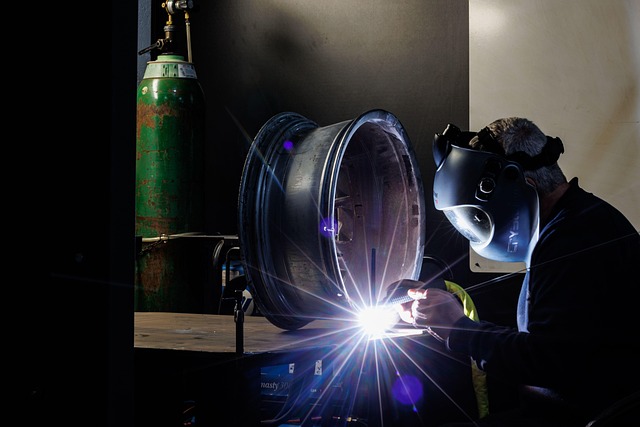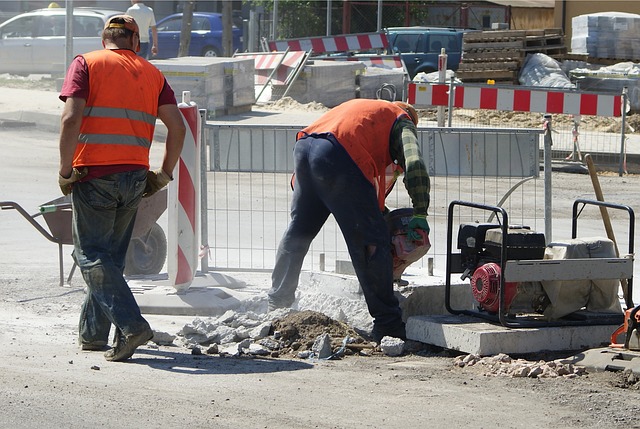Foundation Repair Specialists play a vital role in ensuring structural integrity and longevity of buildings by stabilizing concrete soils. They address instability caused by factors like poor drainage, weak structure, and moisture using techniques like cementation, chemical treatments, soil consolidation, and mesh reinforcement. By choosing appropriate stabilization methods based on soil type, damage extent, and budget, they prevent costly repairs, mitigate environmental impacts with eco-friendly practices, and embrace advanced technologies for enhanced stability and reduced maintenance.
Concrete soil stabilization is a critical process ensuring structural integrity and longevity of buildings. This comprehensive guide explores various aspects, from understanding soil needs and common instability causes to advanced stabilization techniques and environmental considerations. We delve into the expertise of foundation repair specialists, highlighting their role in choosing optimal methods. Case studies showcase successful projects, while future trends in concrete soil technology offer promising solutions for long-term soil control. For homeowners and professionals alike, this article provides invaluable insights with a focus on Foundation Repair Specialists as key contributors to stable, secure foundations.
Understanding Concrete Soil Stabilization Needs

Concrete soil stabilization is a critical process that addresses the structural integrity of buildings and infrastructure. It involves assessing and improving the strength and stability of soil to support concrete structures effectively. This is particularly crucial for regions with unstable soils, where proper stabilization can prevent costly foundation repairs, a common concern among building owners and Foundation Repair Specialists.
The needs for stabilization vary based on factors like soil composition, load bearing requirements, and environmental conditions. Understanding these variables is essential for specialists to employ the right techniques, such as cementation or chemical treatments, to reinforce the soil-concrete interface. This proactive approach ensures the longevity of structures, reducing the risk of structural damage and costly renovations over time.
Common Causes of Soil Instability

Soil instability is a prevalent issue that can lead to significant structural problems, prompting many homeowners to turn to foundation repair specialists. Several factors contribute to this challenge, with some common causes being improper soil drainage, weak or inadequate soil structure, and excessive moisture content. These conditions create an environment where the soil cannot effectively support the weight of buildings or infrastructure above it, leading to settlement, cracks, and other structural damages.
Understanding these underlying issues is crucial for effective concrete soil stabilization. For instance, poor drainage often results in waterlogging, causing the soil to expand and contract with changing moisture levels, which weakens its bearing capacity over time. Addressing these causes early on, through proper soil analysis and targeted remediation techniques, can prevent costly repairs later and ensure the longevity of any construction or renovation project.
Techniques for Effective Stabilization

Foundation Repair Specialists employ various techniques for effective concrete soil stabilization, addressing a critical aspect of structural integrity. One such method is the introduction of chemical stabilizers, which reinforce the soil by reducing its liability to shift or expand due to moisture fluctuations. These stabilizers are strategically injected into the soil, creating a more uniform and compact structure that provides a solid base for structures.
Another proven technique involves mechanical stabilization, where specialized equipment is used to improve soil strength. This includes processes like soil consolidation, which compacts loose soil, and geotechnical engineering solutions such as applying mesh or wire reinforcement. By combining these methods, Foundation Repair Specialists can enhance the stability of concrete structures, ensuring longevity and protection against potential damage caused by unstable soil conditions.
The Role of Foundation Repair Specialists

Foundation Repair Specialists play a pivotal role in concrete soil stabilization, ensuring the structural integrity and longevity of buildings. They employ advanced techniques and technologies to assess and address issues related to soil conditions, such as settlement, heave, or erosion, which can compromise the stability of foundations. These specialists are equipped with extensive knowledge of geotechnical engineering principles, allowing them to design effective solutions tailored to specific site challenges.
Their expertise encompasses a range of services, from conducting thorough site inspections and soil testing to implementing innovative stabilization methods like deep foundation enhancements, soil reinforcement, or the use of specialized materials. By collaborating closely with architects, engineers, and developers, Foundation Repair Specialists contribute to creating robust and durable infrastructure that can withstand environmental factors and ensure the safety and value of properties over time.
Choosing the Right Stabilization Method

Choosing the right stabilization method is crucial for addressing concrete soil issues effectively. Foundation repair specialists employ various techniques, each suited to specific challenges. For instance, chemical stabilization involves injecting chemicals into the soil to improve its bearing capacity. This method is ideal for areas with weak or compressible soils. On the other hand, mechanical stabilization uses equipment like vibrators or deep mixing to enhance soil structure, making it more robust and less susceptible to settling.
Selecting the appropriate approach depends on factors such as soil type, extent of damage, structural requirements, and budget constraints. Foundation repair specialists conduct thorough site assessments to determine the best course of action. They consider not just the immediate problem but also long-term sustainability, ensuring that the chosen stabilization method provides a permanent solution for concrete structures.
Long-Term Solutions for Soil Control

Soil control is a significant aspect of any construction project, and when it comes to long-term solutions, Foundation Repair Specialists play a pivotal role. They offer advanced techniques to stabilize soil, ensuring structural integrity for years to come. One effective method involves deep dynamic compacting, which compacts the soil to increase its load-bearing capacity, making it ideal for building foundations. This process is especially beneficial in areas with loose or unstable soils, reducing settlement issues and extending the lifespan of structures.
Additionally, specialists often employ geotechnical engineering principles to design tailored stabilization strategies. This includes using specific types of soil stabilization products like cement or polymer-based solutions that enhance the soil’s strength and durability. By combining these techniques with regular maintenance, Foundation Repair Specialists can provide durable, long-lasting solutions for soil control, addressing potential issues before they impact the integrity of buildings and infrastructure.
Case Studies: Successful Stabilization Projects

Concrete soil stabilization is a game-changer in the realm of foundation repair specialists, offering effective solutions for challenging ground conditions. Case studies from around the globe highlight the successful transformation of unstable soils into robust foundations. For instance, in urban settings, where dense buildings and limited space create unique challenges, specialized techniques have been employed to stabilize deep-seated soil movement, preventing costly structural damage. These projects often involve innovative methods such as chemical stabilization, which reinforces the soil’s integrity, or mechanical stabilizers that enhance ground strength without excavation.
Real-world applications demonstrate the versatility of these solutions. In coastal areas, where erosion is a constant threat, stabilization techniques have been instrumental in safeguarding critical infrastructure and residential properties. Similarly, desert regions face their unique challenges with quicksand-like soils, which can be remedied through targeted soil stabilization projects. These successful cases not only showcase the effectiveness of specialized treatments but also emphasize the importance of tailored solutions for diverse geological landscapes, ensuring structures remain secure and stable for years to come.
Environmental Considerations in Stabilization

When it comes to concrete soil stabilization, environmental considerations are paramount. Foundation repair specialists must employ eco-friendly methods that minimize disruption to local ecosystems. This includes assessing and mitigating potential pollution from construction materials and processes, ensuring proper waste management, and selecting stabilizers that are non-toxic and sustainable. By adopting these practices, specialists can help preserve the delicate balance of the surrounding environment while achieving robust soil stabilization.
Additionally, efficient water usage is a key factor in environmental-friendly concrete soil stabilization. Specialists should implement water conservation strategies, such as using recycled water for mixing and irrigation, to reduce their project’s overall water footprint. Furthermore, choosing stabilizers that enhance soil infiltration and water retention can contribute to better drainage and reduced runoff, benefiting both the stabilized site and nearby aquatic habitats.
Future Trends in Concrete Soil Technology

The future of concrete soil stabilization looks promising, with innovations driven by the need for efficient and sustainable solutions. As environmental concerns grow, there’s a rising focus on eco-friendly technologies that minimize waste and reduce the carbon footprint associated with traditional construction methods. Foundation repair specialists are at the forefront of this shift, exploring advanced materials and techniques to enhance soil stability.
One prominent trend is the integration of smart, self-healing concrete mixtures. These innovative formulations incorporate healing agents that can automatically mend cracks and weaknesses in concrete structures, extending their lifespan and reducing maintenance costs. Additionally, the adoption of digital technologies like sensors and data analytics promises enhanced monitoring capabilities for soil and foundation health, allowing for proactive intervention and precise adjustments to stabilization measures.
